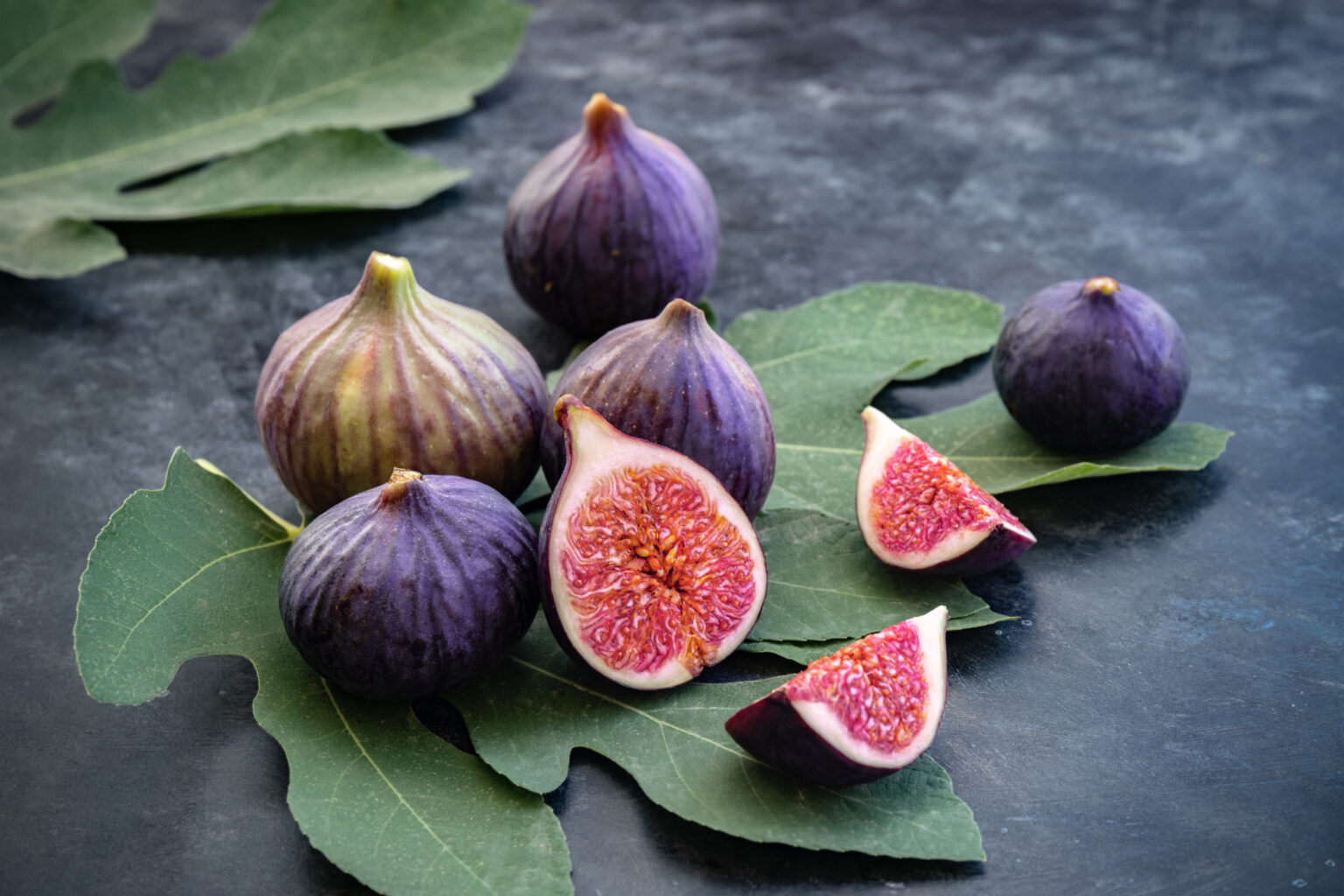Figs are having a bit of a moment on social media. More and more fig videos seem to be popping up on people’s feeds out of the fog of relative fruit obscurity.
“Figs have been gaining popularity, especially with the rise of interest in plant-based diets and superfoods,” nutritional therapist Amie Butler of Amie Butler Nutrition told Newsweek.
The trend may also be due to the unusual way figs are pollinated, a story that has been spreading on TikTok.
Rather than a fig tree’s blossoms being pollinated by bees—as happens with apples, for example—the fig fruit is an inverted flower.
A small wasp crawls inside the fruit to pollinate it and usually proceeds to lay eggs and die there. The fig then absorbs the wasp, so you shouldn’t notice any wings while eating.
The search term may also have been bolstered by the trending nursing scrubs brand of the same name.
But, for nutrition and wellness buffs, the fruit offers a healthy—and aesthetically pleasing—way to enjoy a sweet treat.
“I love figs for their unique sweetness and chewy texture,” said Butler. “They go especially well with cheese or oven-baked with cinnamon to serve with live yogurt.”
Nutritional therapist Charlotte Watts of charlottewattshealth.com told Newsweek: “I love figs. I love them very, very much. I have seen them becoming more prevalent—I don’t know if that’s ‘popular.’ I’ve seen more fresh figs around.
“I don’t think they seem as exotic as they used to…I love eating a fresh fig as a fruit, and I have done it for a long time because they’ve helped me with digestive stuff, and the taste is so delicious.”
Nutritional therapist Milena Mastroianni of the Institute for Optimum Nutrition shared her appreciation for the soft fruit, saying, “Figs are a lovely autumnal fruit… I personally love figs.”
But it’s not just about taste. While all three agreed that figs were delicious, the nutritional therapists also gave reasons why they were valuable additions to the diet.
“For me, the biggest plus of figs is their fiber content, which we know is wonderful for our gut health and microbiome,” said Mastroianni. Dietary fiber helps regulate the gut and feed beneficial gut microbes.
Watts said that figs, along with prunes, were traditional constipation remedies because the soluble fiber could “get the bowels moving.”
However, Watts said that their laxative effect has downsides.
“If people are prone to diarrhea, they might find that they can only tolerate them occasionally or that the fresh fruit is more tolerable than the dried fruit when the fiber is more concentrated,” she said.
But fiber isn’t the only thing figs have going for them. They’re full of micronutrients, too, the nutritional therapists said.
“They also contain plenty of vitamins and minerals, especially vitamin A, vitamin K, vitamin B6, calcium, iron, potassium and magnesium,” said Mastroianni.
All of these are essential micronutrients that help support bodily function. For instance, vitamin A supports eye health, iron is good for the blood, and vitamin K and calcium help bones stay strong and healthy.
Butler added: “[Figs] contain protective plant compounds called polyphenols. These compounds may have protective antioxidant properties in the body.”
Polyphenols are plant chemicals believed to reduce oxidative stress in the body and wear and tear from everyday chemical reactions that can contribute to aging and disease risk.
All three experts mentioned only one major downside—apart from figs’ laxative effects—which was the fruit’s sugar content.
“Figs tend to have a high carb content compared with other fruits like berries,” said Mastroianni. “But this is compensated when figs are paired in dishes like salads, which tend to contain more fiber and protein.”
Butler added that some individuals who are sensitive to sugar may experience blood sugar spikes after eating figs due to their high sugar content.
However, Watts clarified that, while figs are a source of sugar, so they could have this effect in some people, they generally have a blood-sugar-balancing effect.
“For many people, they help manage blood sugar,” she said. “So, there have been some studies on diabetes which showed they help to regulate insulin. Some of that is also with fig leaf tea.
“They have that soluble fiber, so they release sugar slowly, but they are also beautifully sweet. They’ve got that good seed sack, so it takes a lot to chew.
“That satisfies the brain—it knows it’s had something—and you receive a bit of sweetness as well. In many ways, that’s the kind of thing that intercepts blood sugar craving loops. They’re very useful to have around.”
In other words, figs’ sweetness can satisfy sugar cravings, but the fiber slows down the release of sugars into the body, so the blood glucose response isn’t as dramatic.
However, Watts cautioned that dried figs were likely to cause a sharper blood sugar spike because the sugar is more concentrated, and it’s easier to eat more of them.
Do you have a tip on a food story that Newsweek should be covering? Is there a nutrition concern that’s worrying you? Let us know via science@newsweek.com. We can ask experts for advice, and your story could be featured in Newsweek.
Read the full article here

